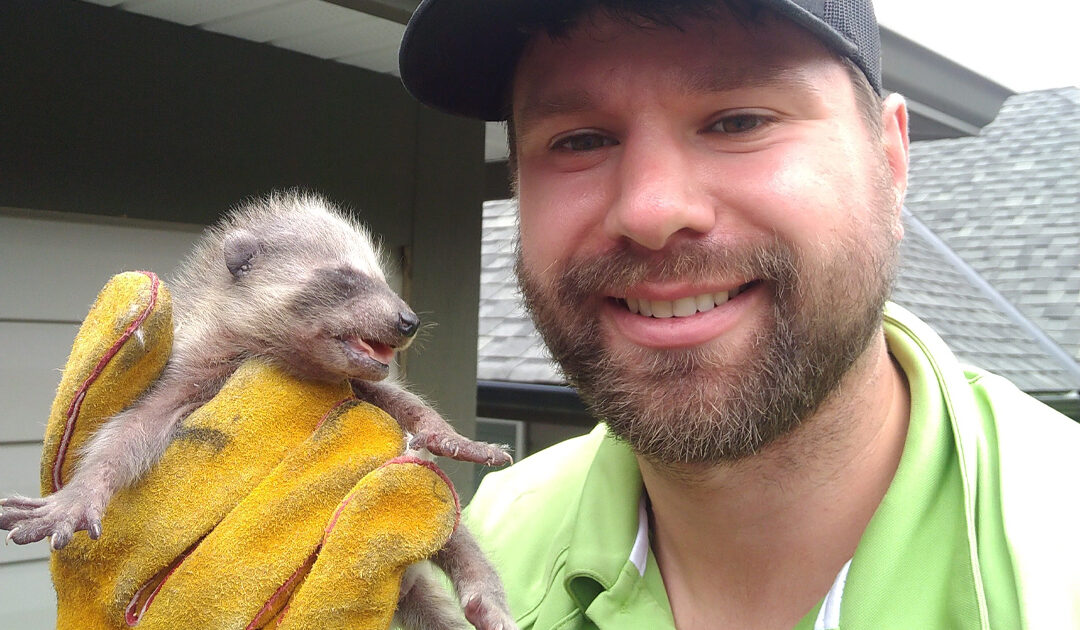A nice, warm home is the perfect setting for an animal to make a nest and have its babies. Small mammals like squirrels, raccoons, bats and mice are notorious for burrowing into residences, making a hidden nest and reproducing. In some cases, homeowners are completely unaware that their house is hosting a nest of baby animals.
Small mammals and rodents prefer the hidden areas of your home, such as the attic, basement, crawl space, or inside the ceiling and walls. Even though they may not be noticeable, nesting animals and their young can cause significant and costly damage to your property. At Skedaddle Humane Wildlife Control, we can help educate homeowners on the signs of nesting animals and assist with safe wildlife removal.
Strange Noises in Your Home
The first sign that you may have wild unwelcome visitors nesting inside of your home would be strange noises. If you have an infestation of small mammals or rodents in your home, you may hear quiet scratching in the walls and ceilings. You may also hear the animals scurrying around at night or early in the morning. When you have a nest of babies in your home, the sounds may multiply with more activity.
The other types of noises you could hear during mating season and after birth would be the sound of the babies. Baby squirrels make a high-pitched squealing or crying noise. Young mice may squeak, chirp or purr. A nest of baby raccoons may quietly growl, snarl, cry or meow. If you have baby bats in your house, you may hear the noise of them flapping their wings, chirping or scratching.
Breeding Season for Small Animals
The next clue that you may have baby animals in your home is the time of year. The mating season for most small mammals and rodents falls in the springtime or summer. If you spot a mouse or other type of rodent inside of your home, and it’s spring or summer, you can count on there being a nest nearby. Mice have babies every 21 days, guaranteeing there are more.
Raccoons typically give birth early in the spring, in March or April. Bats come next, having their young in April or May. Squirrels may have litters born in the spring or as late as the summer in August. Litters from small mammals may have between three and five babies at one time.
Natural Instincts To Reproduce
Finally, any type of small mammal or rodent naturally has an instinct to constantly reproduce. When there is one type of animal in your home, there is likely going to be more coming once mating season arrives. In the spring, when the weather starts to get warmer, the chances of small animals using your home to have their babies may increase.
It’s common for small animal mothers to choose a warm, quiet place in the spring to build their nests. If they choose somewhere in your home, their babies will add to a problematic infestation. The best course of action is to quickly seek wildlife removal from Skedaddle Humane Wildlife Control. Skedaddle may be able to safely remove the animal before it gives birth inside of your property.
Knowledgeable Wildlife Removal
Removing wildlife, especially during the breeding season, requires knowledge about each species, their behaviour and their habits. At Skedaddle Humane Wildlife Control, our team understands the d behavioural patterns and seasonal routines of small mammals ready to give birth. We can remove an infestation and help you prevent a nest of babies from invading your home in the future.
If you see or hear signs of small mammals or rodents in your home, you must act fast. Contact the team at Skedaddle Humane Wildlife Control. Our process is led by science and practical solutions that protect your home and everyone inside.




